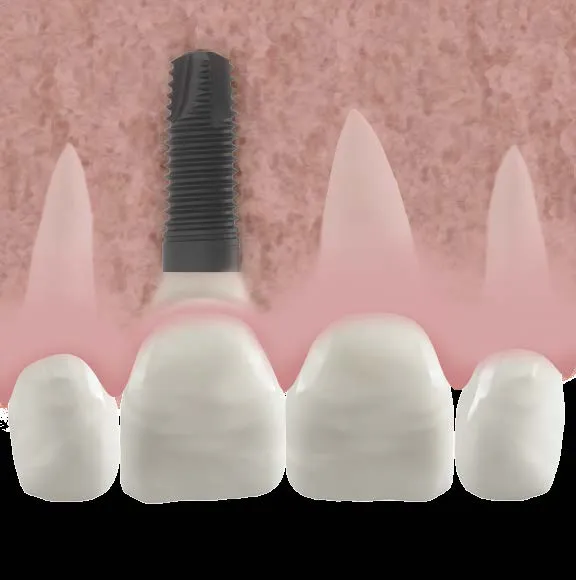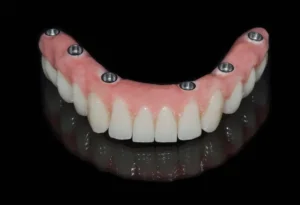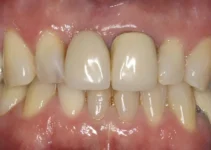Choosing between a dental bridge and an implant can be a pivotal decision in your oral health journey. Both options offer unique benefits and can significantly impact the functionality and aesthetics of your smile. Dental bridges are often recommended for individuals looking to replace one or more missing teeth quickly and cost-effectively. On the other hand, implants are lauded for their durability and the ability to preserve jawbone health. By comparing these treatments, you can make an informed choice that aligns with your long-term dental goals and overall health.
What is a Dental Bridge?
A dental bridge is a custom-made dental appliance designed to replace one or more missing teeth by bridging the gap between the remaining teeth. It is typically anchored in place by dental crowns on either side of the gap, ensuring a stable and functional replacement for the missing tooth or teeth. Properly placed dental bridges can help maintain the facial structure, improve chewing and speaking capabilities, and prevent the remaining teeth from shifting.
The application of dental bridges has evolved significantly over the years, thanks to advancements in material science and dental technology. Modern dental bridges can be made from various materials, including porcelain, ceramic, gold, and metal alloys. The choice of material often depends on the location of the missing tooth, aesthetic considerations, and the patient’s specific needs.
In summary, dental bridges are an important solution in restorative dentistry, offering functional and aesthetic benefits. They provide an effective way to address tooth loss, which can otherwise lead to more complex oral health issues.
Types of Dental Bridges
There are several types of dental bridges available, each designed to address different patient needs and clinical situations. The most common types include:
- Traditional Bridges: These consist of one or more artificial teeth held in place by dental crowns on either side. They are typically made from porcelain fused to metal or ceramics and are most commonly used when natural teeth surround the gap.
- Cantilever Bridges: Used when there are adjacent teeth on only one side of the missing tooth or teeth. These bridges are less common and typically used in areas of the mouth that are under less stress, such as the front teeth.
- Maryland Bonded Bridges: Also known as resin-bonded bridges, they involve a metal or porcelain framework with wings that are bonded to the back of adjacent teeth. These are primarily used for missing front teeth to preserve the structure of the surrounding teeth.
- Implant-Supported Bridges: These are anchored in place by dental implants instead of crowns or frameworks. They are particularly useful when multiple teeth are missing, providing a stable and long-term solution.

Pros of Dental Bridges
Dental bridges offer numerous benefits for patients dealing with tooth loss. Some of the most notable pros include:
- Restoration of Function: Dental bridges can restore the ability to chew and speak properly. Missing teeth can impair these functions, but bridges provide a solid replacement.
- Improved Aesthetics: Bridges can significantly enhance the appearance of the smile by filling in gaps left by missing teeth. They are designed to blend seamlessly with the natural teeth.
- Preventing Tooth Movement: By filling gaps, bridges prevent adjacent teeth from shifting out of position, which can lead to bite problems and additional oral health issues.
- Supporting Facial Structure: Missing teeth can lead to a sunken appearance in the cheeks and lips. Dental bridges help maintain the natural shape of the face.
Cons of Dental Bridges
Despite their numerous advantages, dental bridges also come with some drawbacks. These include:
- Potential for Decay: The teeth supporting the bridge (abutment teeth) are at risk of decay if proper oral hygiene is not maintained. Decay under a bridge can compromise its stability and longevity.
- Alteration of Healthy Teeth: Traditional bridges require the alteration of adjacent healthy teeth to accommodate the crowns that hold the bridge in place. This can weaken these teeth over time.
- Limited Longevity: While bridges can last many years, they are not as long-lasting as dental implants. Typically, bridges may need to be replaced after 10 to 15 years.
- Potential Fit Issues: Improperly fitted bridges can cause discomfort, difficulty in chewing, and may lead to additional dental problems.
Understanding the pros and cons of dental bridges can help patients make informed decisions about their oral health. For those looking to delve deeper into this topic, exploring related articles on modern dental techniques and materials can be quite enlightening.
What is a Dental Implant?
A dental implant is a surgical component that interfaces with the bone of the jaw or skull to support a dental prosthesis such as a crown, bridge, denture, or facial prosthesis. It acts as an artificial root that provides a strong foundation for fixed or removable replacement teeth made to match your natural teeth. Dental implants are a popular and effective long-term solution for people who suffer from missing teeth, failing teeth, or chronic dental problems.
The implant itself is typically made of titanium, a biocompatible material that integrates well with bone. The process of the bone growing around the implant is called osseointegration, and this is what makes the implant so stable and durable. According to numerous studies, dental implants have a success rate of up to 98%, making them a reliable option for tooth replacement.
The procedure involves several stages, starting with the planning phase, where your specific dental and medical needs are considered. This is followed by the surgical insertion of the implant, a healing period where the implant integrates with the bone, and finally the attachment of the prosthetic tooth or teeth. The entire process can take several months to ensure the implant is securely anchored.
Types of Dental Implants
There are primarily two types of dental implants:
- Endosteal Implants: These are the most common type of implants and are surgically inserted directly into the jawbone. They are typically shaped like small screws.
- Subperiosteal Implants: These implants are placed under the gum but above the jawbone. They are a good option for patients who do not have enough healthy jawbone and cannot undergo a bone augmentation procedure.
Beyond these, there are other specialized implant types such as the Zygomatic Implants, which are used in situations where traditional implants are not viable. These implants are anchored in the cheekbone rather than the upper jaw.
Choosing the correct type of implant is crucial for the success of the treatment. Factors like the location of the missing tooth, the quality and quantity of the jawbone, and the patient’s overall health will influence this decision. Advanced imaging techniques such as 3D Cone Beam CT scans are often used to create detailed maps of a patient’s mouth and jaws, ensuring precise placement of the implant.
Pros of Dental Implants
Dental implants come with a variety of advantages that make them an excellent choice for tooth replacement:
- Improved Appearance: Dental implants look and feel like your own teeth. They are designed to fuse with bone, making them permanent.
- Enhanced Oral Function: Implants allow you to speak without the worry that teeth might slip, and they function like natural teeth, enabling you to eat your favorite foods with confidence and without pain.
- Durability: Implants are very durable and with good care, many implants last a lifetime.
- Convenience: Unlike removable dentures, implants eliminate the inconvenience of removing them and the need for adhesives to keep them in place.
Additionally, dental implants promote healthy bone and gums by preventing the bone loss that typically follows the loss of teeth. This helps maintain the structure of your face, preventing the sunken appearance that often accompanies tooth loss.
Cons of Dental Implants
While dental implants have many benefits, there are some potential drawbacks to consider:
Cost: Dental implants can be more expensive than other tooth replacement options. The cost can vary widely depending on the complexity of the case and the number of implants needed.
Surgery and Recovery Time: The process of getting implants involves surgery, which carries inherent risks such as infection, injury to surrounding teeth, or nerve damage. Recovery from implant surgery can also take several months.
Not Suitable for Everyone: Not all patients are ideal candidates for dental implants. Conditions such as insufficient bone density, chronic illnesses like diabetes, or habits like smoking can affect the success of the implant.
Despite these drawbacks, many patients find that the benefits far outweigh the limitations. Consulting with a specialist can help determine whether dental implants are the right choice for you.
Interested in learning more about dental health? Be sure to check out our other articles for in-depth information and expert advice.
Comparing Dental Bridges and Implants
When it comes to replacing missing teeth, two of the most popular options are dental bridges and implants. Both have their own set of advantages and disadvantages, and the best choice often depends on the specific needs and conditions of the patient. This article aims to provide a comprehensive comparison to help you make an informed decision.
One common scenario is a patient with a bridge that needs renewing, as seen in a 45-year-old patient. Understanding the differences in cost, durability, maintenance, and aesthetic outcomes between bridges and implants can significantly impact treatment planning and patient satisfaction.
Cost Comparison
The initial cost of dental implants is generally higher than that of dental bridges. Implants involve surgical procedures, high-quality materials, and often an extended treatment time. However, when considering the long-term costs, implants can be more cost-effective as they typically last longer and require fewer replacements and repairs.
On the other hand, dental bridges are less expensive up-front. The procedure is usually quicker and does not involve surgery, making it a more immediate and less invasive solution. However, bridges may need to be replaced every 10-15 years, which can add up over time.
For patients with specific needs, such as the loss of a lateral incisor with limited space only allowing a Tiny® platform implant, the cost may vary significantly. In such cases, a detailed cost-benefit analysis by the dental professional is crucial.
Durability and Maintenance
Durability is where dental implants often outshine dental bridges. Implants are made of materials like titanium, which are highly durable and can last a lifetime with proper care. They are also resistant to decay, unlike the natural teeth that support bridges.
Dental bridges, while durable, may not last as long as implants. The natural teeth that support the bridge can be susceptible to decay and gum disease, which can compromise the bridge over time. Regular maintenance and check-ups are essential for prolonging the lifespan of a bridge.
When considering the maintenance of implants, it’s important to note that they require good oral hygiene practices, just like natural teeth. Regular brushing, flossing, and dental check-ups are crucial. Failure to maintain proper hygiene can lead to conditions such as peri-implantitis.
Aesthetic Outcomes
The aesthetic outcomes of dental implants and bridges can be quite similar at first glance, but there are some differences worth noting. Dental implants are designed to mimic the appearance and function of natural teeth closely. They are anchored directly into the jawbone, which helps maintain the natural contour of the face and jawline.
Dental bridges also provide a natural-looking solution but may not offer the same level of permanence and stability as implants. Over time, the bone beneath a bridge can resorb, leading to changes in facial structure and potential aesthetic concerns.
For patients who have lost a lateral incisor and need a solution that blends seamlessly with their existing teeth, dental implants, especially those using platforms like Tiny®, can offer superior aesthetic results. Choosing the right option between dental bridges and implants involves careful consideration of several factors. We recommend discussing your specific needs and circumstances with your dental professional to determine the best solution for you.
For more in-depth information on other dental procedures and comparisons, be sure to check out our other articles.
Choosing the Right Option for You
Consultation with Your Dentist
When it comes to selecting the appropriate dental implant, the first step is an in-depth consultation with your dentist. This discussion will involve a thorough examination of your oral health, including X-rays and possibly a CT scan. During this phase, your dentist will evaluate the condition of your existing teeth, gums, and jawbone to determine the most suitable implant type. A well-executed consultation can prevent complications and ensure a higher success rate for your implant procedure.
In addition to the physical examination, your dentist will also discuss your medical history. Certain conditions, such as diabetes or heart disease, can influence the choice of implant and the approach to treatment. It is crucial to be transparent about your health history to create a personalized treatment plan that meets your needs.
Personal and Financial Considerations
Beyond the clinical aspects, there are significant personal and financial considerations to take into account. Dental implants come in various types and materials, each with different cost implications. For instance, implants made from titanium are generally more expensive but offer greater durability and compatibility with the jawbone.
Your lifestyle and personal preferences will also play a role in this decision-making process. Some patients may prefer options that offer quicker recovery times, while others may prioritize long-lasting results. Discussing these considerations openly with your dentist will help in tailoring the treatment to match both your needs and your budget. To facilitate this process, many dental clinics provide financing options or payment plans to make dental implants more accessible. This is particularly important for patients requiring extensive treatments, such as bone grafts or sinus lifts, which can significantly increase the overall cost.
Long-term Oral Health Goals
Your long-term oral health goals are another critical factor in choosing the right dental implant. Opting for a high-quality implant can have lasting benefits, such as maintaining the integrity of your jawbone and preventing future dental issues. Poor-quality implants, on the other hand, may lead to complications like infections or implant failure.
Additionally, choosing an implant that supports your oral health goals can improve your overall quality of life. For example, a well-fitted implant can restore your ability to chew and speak effectively, boosting your confidence and comfort. Consider your future dental needs when making this decision to ensure sustainable and satisfactory results.
For patients with missing teeth or failing prosthetics, dental implants offer a promising solution. With an implant, you can regain functionality and aesthetics, contributing to both your oral health and overall well-being.
For more information on dental implants and other oral health topics, we invite you to explore our other articles. Your journey to optimal dental health begins with the right knowledge and guidance.
FAQ: Dental Bridge vs. Implant
If you’re considering options for replacing missing teeth, you might be weighing the pros and cons of dental bridges and implants. Here are some key questions answered to help you understand which option might be best for you.
What are the main differences between a dental bridge and an implant?
A dental bridge typically consists of a false tooth or teeth being held in place by crowns attached to the adjacent teeth. The main advantage is that it’s a less invasive solution and usually quicker to implement than an implant. However, it may require altering the adjacent healthy teeth to anchor the bridge, potentially leading to future problems. An implant, on the other hand, replaces the entire tooth, including the root, with a metal post (typically titanium) and is capped with a crown. This option does not affect adjacent teeth and offers more stability and longevity, though the process is more invasive and requires a longer healing period.

My name is Salman Kapa, a 73-year-old expert in bone regeneration and dental implantology. With decades of experience in the field, I am dedicated to advancing our understanding of oral health and hygiene. Through my research and writing, I aim to contribute to the development of innovative solutions in dental care.




